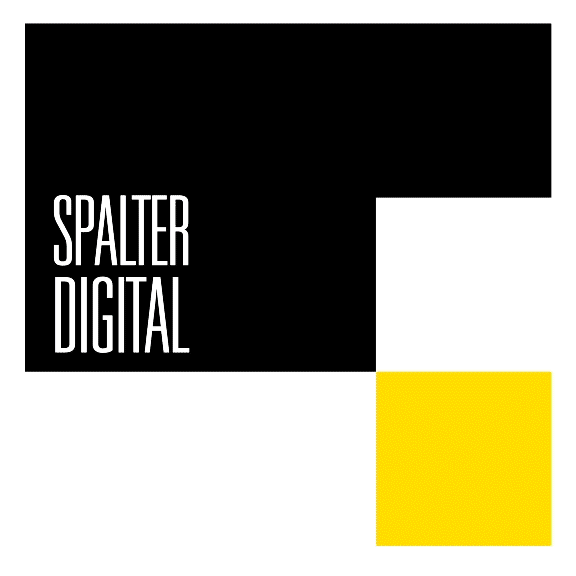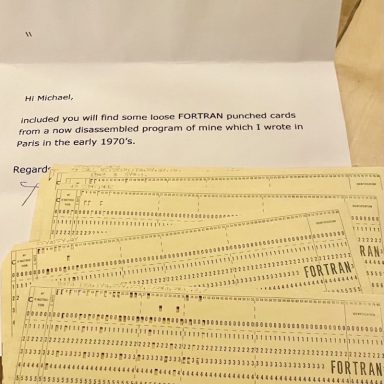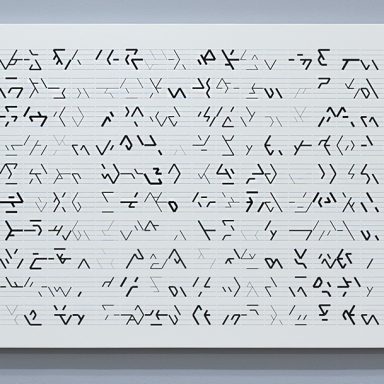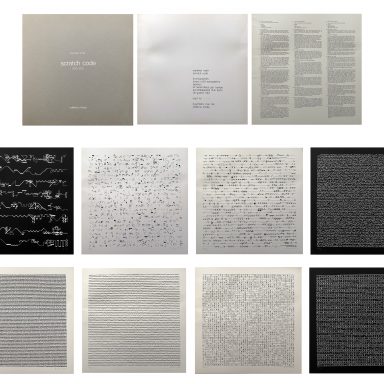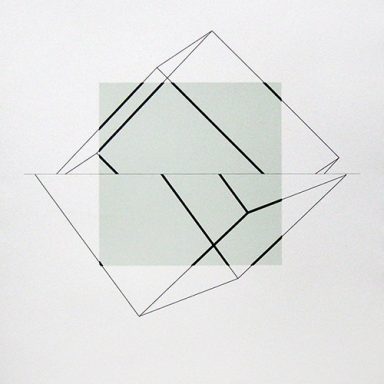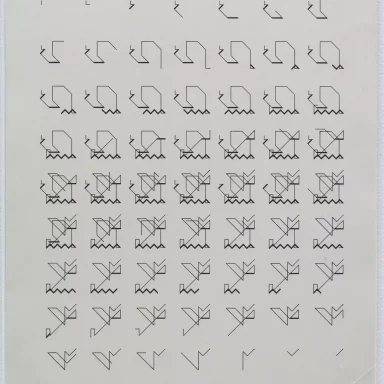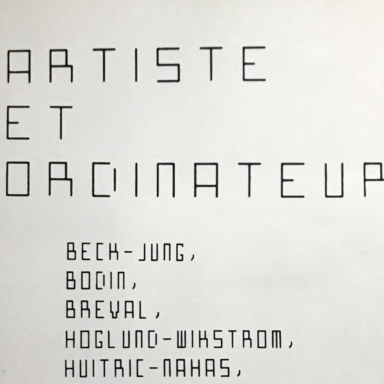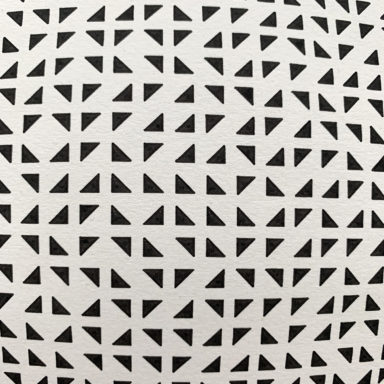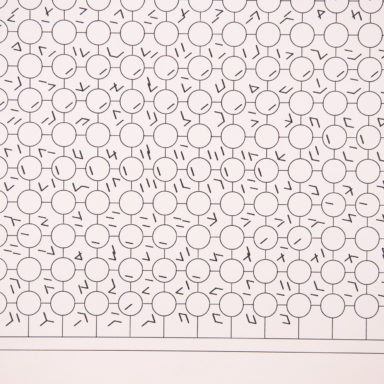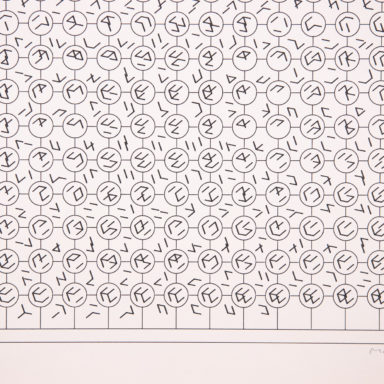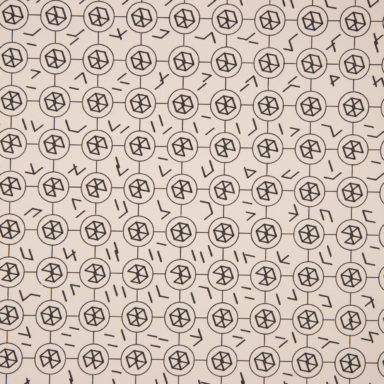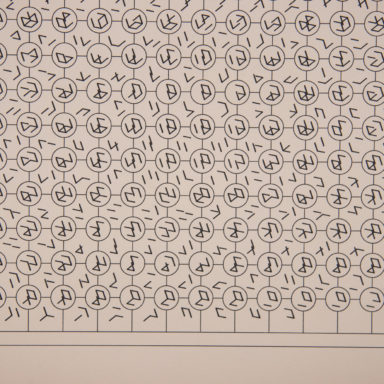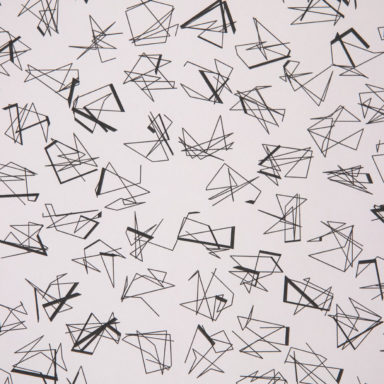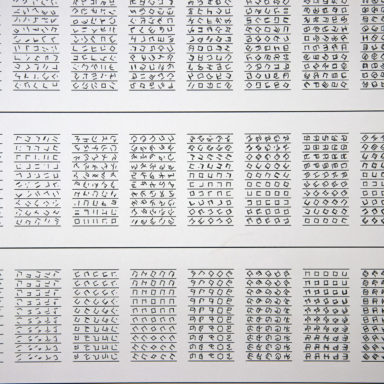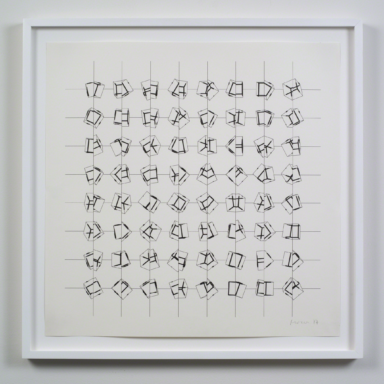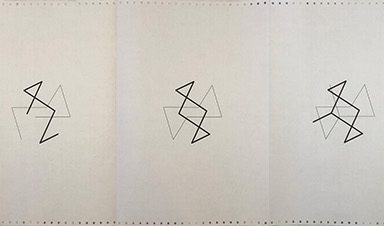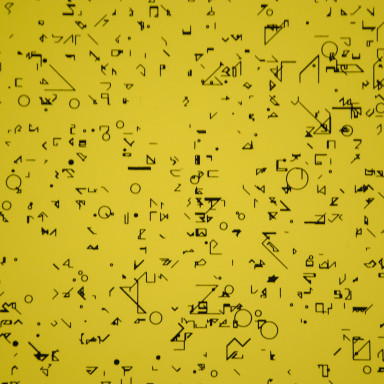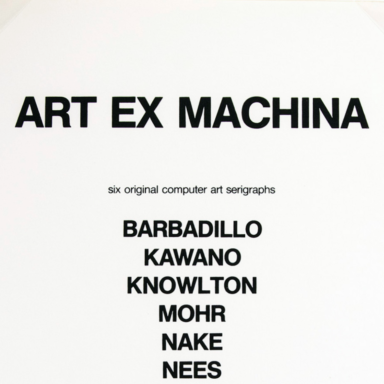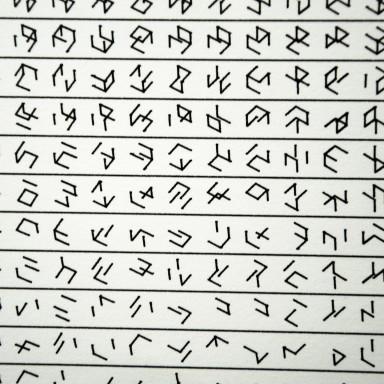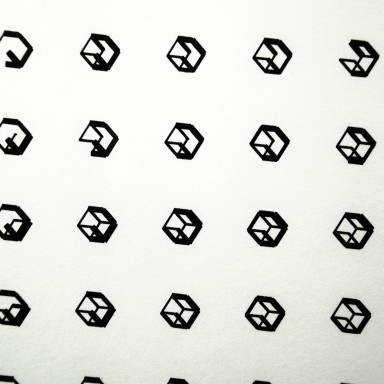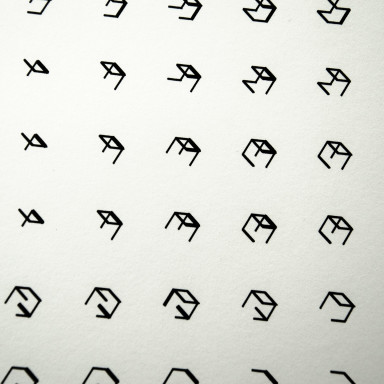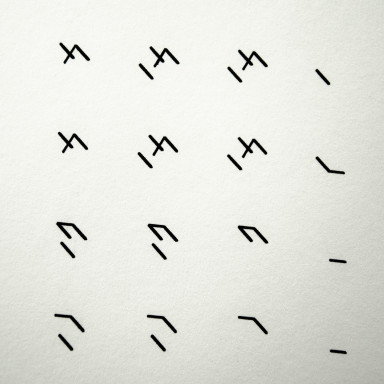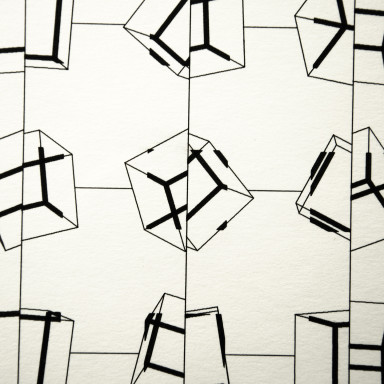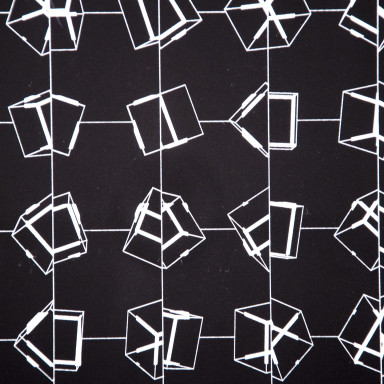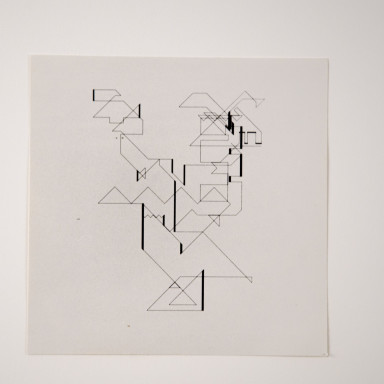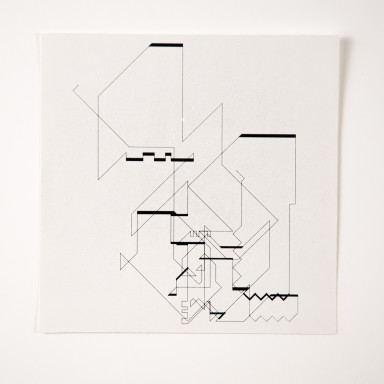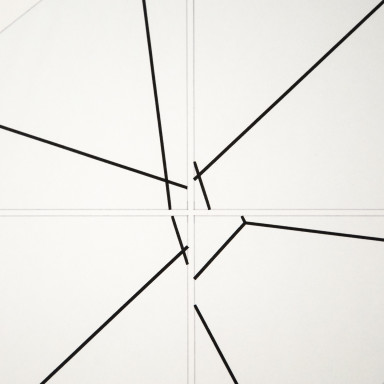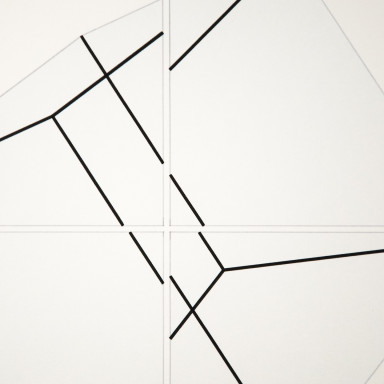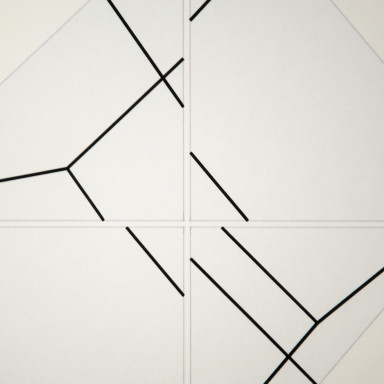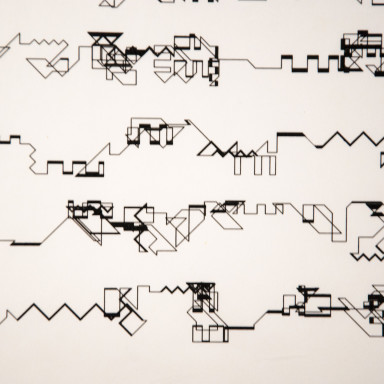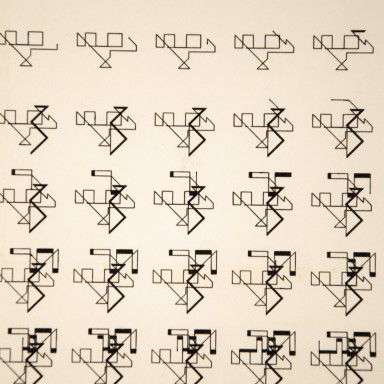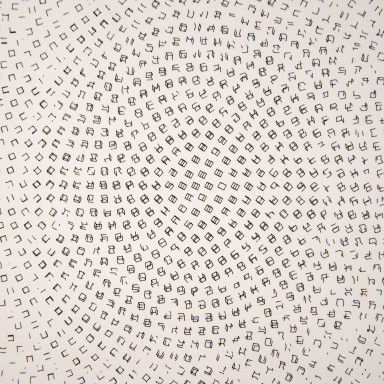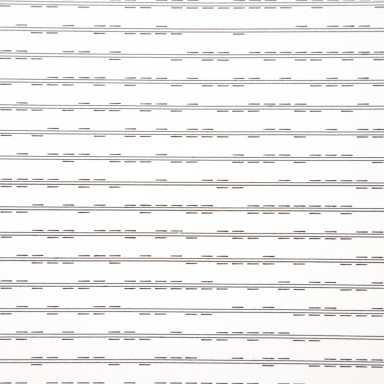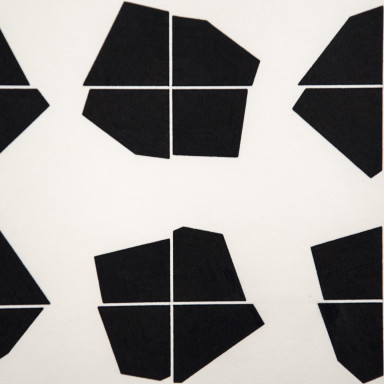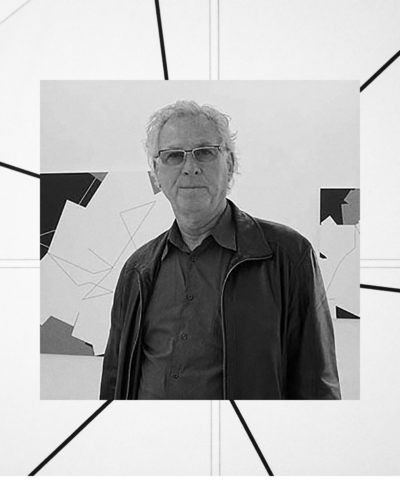
Basic Info
Name: Manfred Mohr
Date of Birth: June 8, 1938
Country of Origin: DE
Website: http://www.emohr.com/
Gallery Representation: bitforms gallery - Steve Sacks - NYC
Galerie Mueller-Roth, Christine Mueller-Roth, Stuttgart Germany
DAM Gallery, Wolf Lieser, Berlin Germany
Gallery Charlot, Valerie Hasson-Benillouche, Paris
Description
Manfred Mohr is one of the great names of computer art, considered a pioneer in the field and nicknamed “godfather” of digital art. His work is distinguished by its radically rational construction which explores series of shapes of ever-increasing complexity.
Born in Pforzheim, Germany, Mohr began his career as an action painter and jazz musician. He co-founded a jazz club and played tenor saxophone and oboe in local groups; later, his knowledge of music theory would influence his practice even after he began to work with computers. His early work was focused on gestural abstraction, but he quickly shifted to using a black and white geometric pictorial language in his paintings. In 1963, he moved to Paris and studied lithography at the École des Beaux Arts, where he continued his artistic evolution, undertaking geometric experiments and incorporating hard-edge theory into his work. After discovering Prof. Max Bense‘s information aesthetics, Mohr’s artistic thinking was radically changed. Within a few years, his art transformed from abstract expressionism to computer-generated algorithmic geometry. Encouraged by the computer music composer Pierre Barbaud whom he met in 1967, Mohr programmed his first computer drawings in 1969.
By the early 1980s, he was living and working full-time in New York. He maintains a clear musical influence in the use of rhythm and repetition in his work, producing pieces characterized by complex series of lines and forms with a clear and methodical underlying structure, created from algorithms that describe a defined system. These algorithms are then executed using pseudo-random numbers as the values of structural parameters. Mohr has explored the multidimensional cube as a source of visual complexity in many of his works, utilizing fractured projections of n-dimensional hypercubes. His practice has been compared to Josef Albers in its’ systematic explorations of shape, as opposed to Albers’ visual research on color.
Mohr’s work was some of the first computer art to be collected by museums and is now held internationally in collections like those of the Centre Pompidou, Paris; Victoria and Albert Museum, London; Stedelijk Museum, Amsterdam; and others from Tel Aviv to Berlin and across the U.S. He has also had many one-person shows and retrospectives dedicated to his work in museums and galleries internationally, as well as innumerable group shows everywhere from MoMA, New York, to MoCa, Los Angeles and Museo Nacional Reina Sofia, Madrid. He received the ACM SIGGRAPH Distinguished Artist Award for Lifetime Achievement in Digital Art in 2013, and has been granted other artistic awards and fellowships in the U.S. and Germany. Recently, he has continued to develop programs and algorithms that revisit his older code in a new way.
